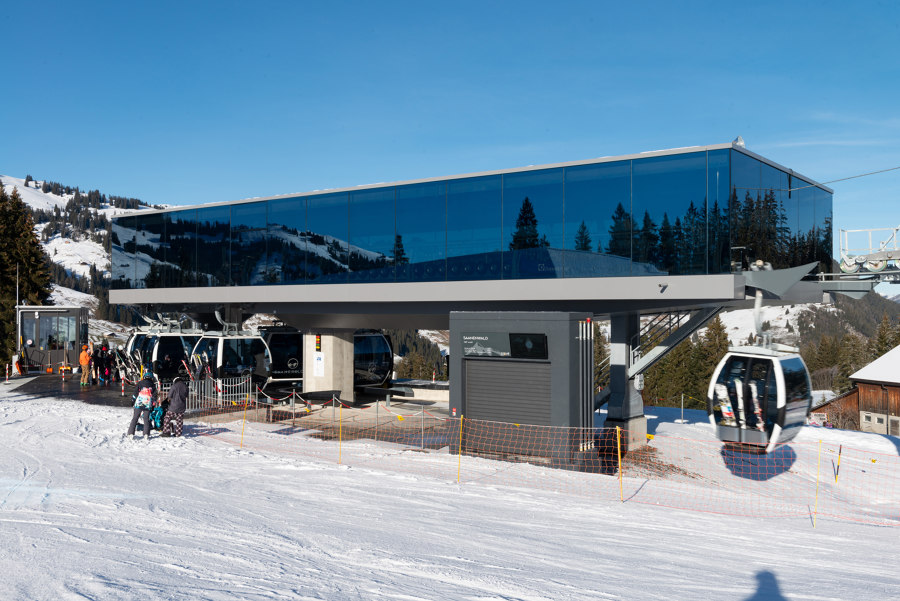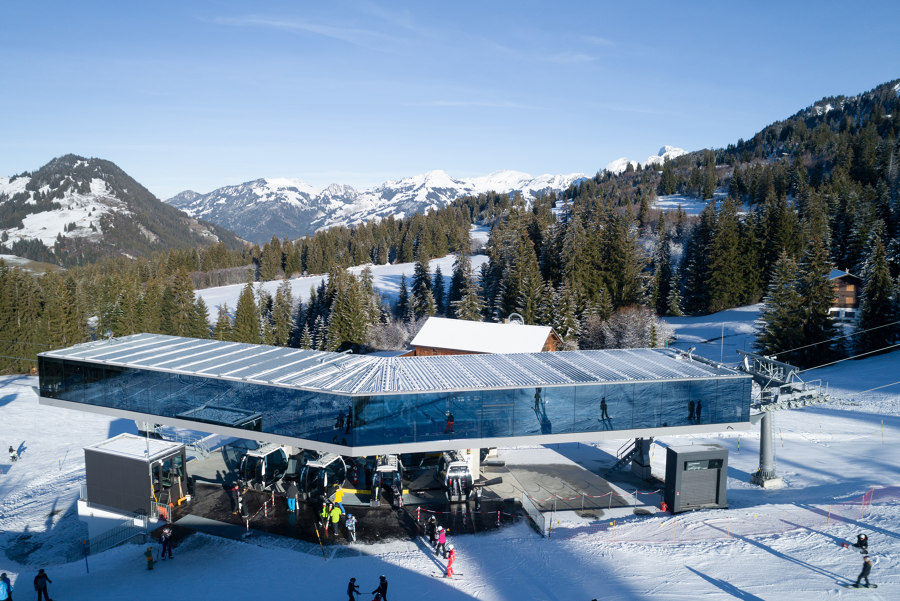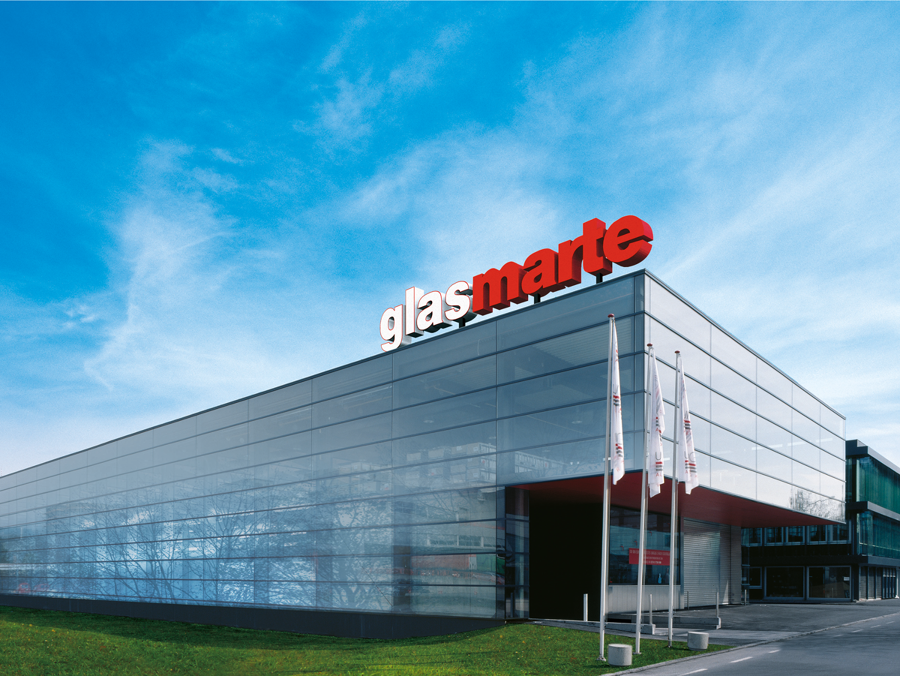High visibility: Glas Marte
Brand story by Julia Hauch
Bregenz, Autriche
09.09.19
The new Saanersloch gondola lift in Gstaad is a static masterpiece – and with its specially designed and unique all-glass facade by GLAS MARTE, it has also reached the top of the world.
On the summit: the first cable car with a real glass facade allows for some very special perspectives
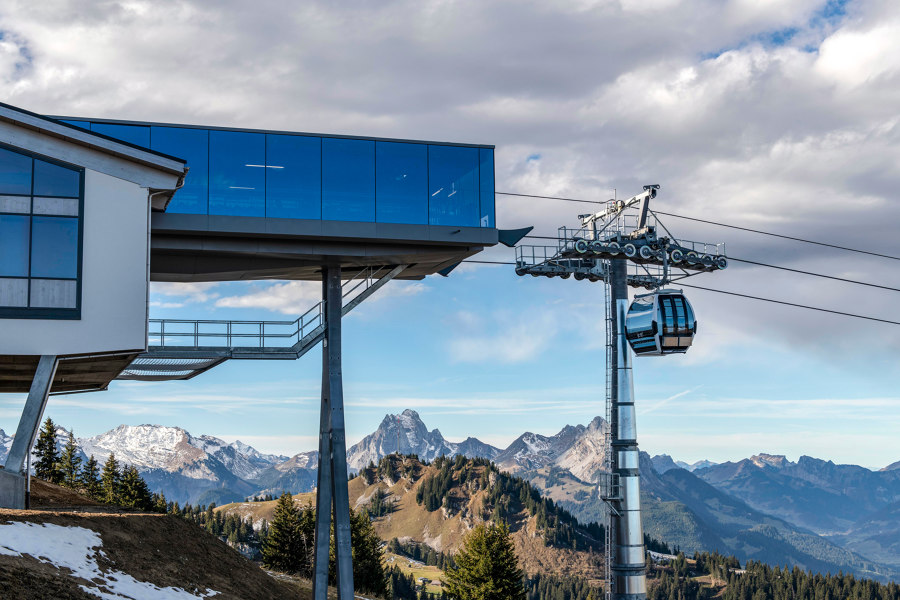
On the summit: the first cable car with a real glass facade allows for some very special perspectives
×White expanses, crunching snow under your skis, wind in your hair, flying downhill on your snowboard. It can only mean one thing: Winterland! Safely at the bottom, happy as a clam, you can barely wait to be lifted into the air again and onto the next run. And even better if it’s in a very special kind of cable car.
The new Saanenmöser-Saanerslochgrat gondola lift in Gstaad is not only the first D-Line gondola lift in Switzerland, but also the first in the world whose stations have a glass panoramic construction. A stand-out feature that offers perspectives far and wide, it can be retrofitted with LED technology to further add to its architectural aesthetic, thus offering a broad range of marketing opportunities.
Built in 1979, the Saanersloch Railway was a milestone in technology at the time. After almost 40 years of service, the busy railway was replaced by a D-Line together with the renowned ropeway manufacturer Doppelmayr/Garaventa and opened to mountain enthusiasts in December 2018. Another milestone, both technically and visually.
First Class like First Glass: The new D-Line gondola lift in Gstaad is not only at the top in terms of technology and comfort, but also in its choice of glass construction. And it is also a true visual showstopper
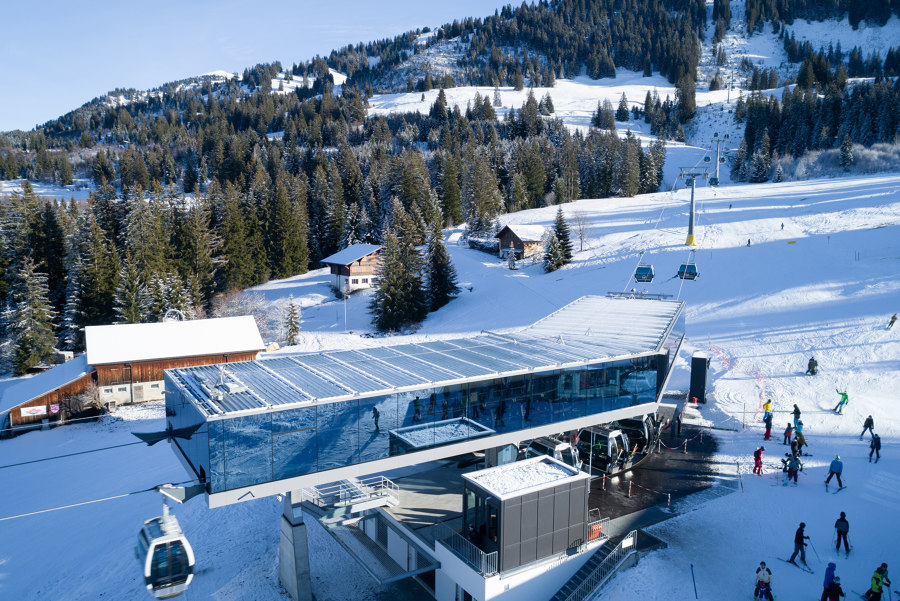
First Class like First Glass: The new D-Line gondola lift in Gstaad is not only at the top in terms of technology and comfort, but also in its choice of glass construction. And it is also a true visual showstopper
×In order to make the special ropeway technology architecturally visible, the Stuttgart planning office was commissioned to design the individual stations in a cubic design with glass façade and corrugated sheet metal roof. No problem in summer, but high snow loads in winter presented a great challenge. For expert support, the team responsible for realising this project brought in the long-standing glass specialist Glas Marte. Due to a special fastening system, sophisticated glass bonding and specially designed glass that can withstand extreme forces such as adverse weather conditions, this dream-team ultimately turned the design into a sustainable reality.
For three generations now, Glas Marte have built their success on innovative and individual solutions in the area of structural glass construction. The company, founded in 1930 and based in Bregenz and Itter, has been one of the leading European glass specialists for many years now and offers glass construction, glass processing and glass systems of the highest technical quality. Always fully patented, and in constant exchange with international experts and universities.
The fact that glass has become an essential architectural material is widely evident – reflecting the transformation of society towards greater openness and transparency. To achieve this however, it must increasingly assume a leading role and function. From the window to the façade, from the glass staircase to the bridge, from the conservatory to the roofing of a sports stadium – or to the complete glass facade of a cable car.
Rudolf Marte (above) founded the company in 1930 as a one-man business. Today the family business employs 340 people

Rudolf Marte (above) founded the company in 1930 as a one-man business. Today the family business employs 340 people
×Well thought-out glass constructions can now fulfil almost all of a building’s physical, structural and architectural requirements and are therefore not just a possible, but in fact already popular substitute for wood, steel and concrete. The greatest challenge is using as few visible structural elements as necessary, because this is the only way glass surfaces can showcase their full aesthetic effect.
Even if glass buildings have nothing to hide at first, this transparent material holds magic up its sleeve – even though it may not be visible at first glance: colourings, darkening effects over insulation elements, or use as a surface for advertising. The glass façade of the Saanersloch railway, for example, can be retrofitted with LED media technology if required to present visitors with advertising or other information on a large scale.
And glass also adapts to colour. The colour "Guardian SunGuard HD Royal Blue 20" not only sounds like a blue summer and winter sky, but also lends the glass cubes an elegant naturalness, blending them carefully into the landscape of the Bernese Oberland. The greatest strength of glass is in setting accents - with lightness.
© Architonic


